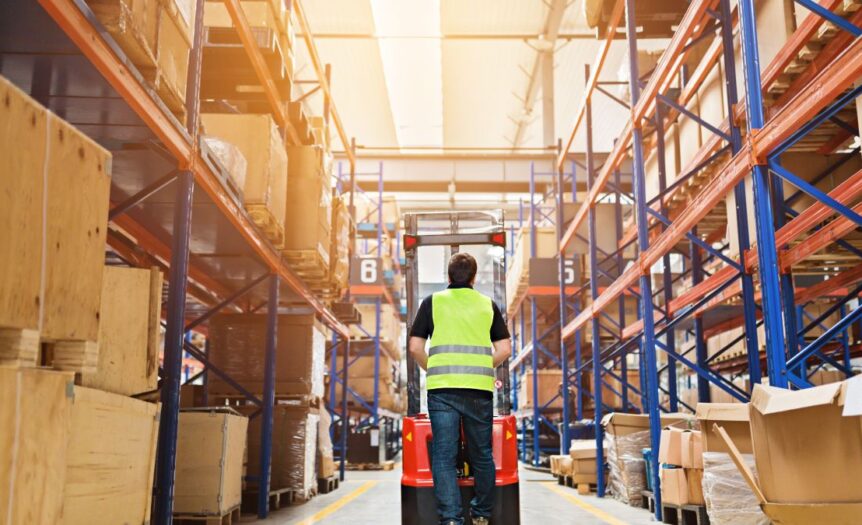Warehouses are bustling hubs of industry and activity, where the movement of goods is essential, yet these dynamic environments come with inherent risks. Ensuring the safety of staff and the protection of goods is a paramount concern for warehouse managers and safety supervisors.
Vital to this effort is the deployment of appropriate safety equipment, which can prevent accidents, improve operational flow, and foster a secure working environment. In this blog, we’ll explore the essential safety equipment every warehouse needs and shed light on their significance, optimal usage, and the criteria for choosing the right gear for your facility.
The Safety Toolkit: Essential Warehouse Equipment
When discussing safety in the warehouse, it’s helpful to categorize the various tools and gear according to the type of hazards you’re addressing. These broad categories include personal protective equipment (PPE) such as hard hats, safety glasses, high-visibility apparel, and footwear. Fall protection measures include safety harnesses and guardrails, as well as forklift safety accessories such as lights and alarms.
Warehouses must also consider barriers to restrict access to dangerous areas. Each type plays a pivotal role in mitigating specific risks and ensuring the warehouse operates with a focus on accident prevention.
Ensuring Safety on the Dock
The loading dock is one of the busiest and most hazardous areas in any warehouse. Dock equipment like dock levelers, trailer restraints, and safety barriers can significantly reduce the risks associated with loading and unloading. For example, high-visibility dock barriers not only delineate the loading zone but also provide clear indications of where pedestrians should be to avoid forklift traffic.
Forklift Safety and Maneuvering
Forklifts are indispensable in warehouses, but they can also pose significant risks, particularly when it comes to maneuvering in tight spaces or where there is a lot of foot traffic. Safety cages and speed governors are excellent enhancements to make sure forklift usage is as safe as possible. Managers should also consider the benefits of buying forklifts outright instead of renting, as it can lead to more stringent safety protocol adherence among operators.
The Role of Technology in Safety
Emerging technologies are revolutionizing warehouse safety. From RFID tagging for inventory management to augmented reality (AR) for forklift navigation, these advancements are making safety measures more proactive and less reliant on human factors. AR, for instance, can display virtual guide rails that forklift operators can follow to minimize the likelihood of collisions and other accidents.
Prioritizing Personal Safety
Although large warehouse equipment gets a lot of attention, it’s equally important to prioritize the safety of individual workers. Providing the appropriate PPE for the necessary workload, maintaining clear labeling and foot traffic patterns, and conducting regular training and reminders about safe workplace practices are essential components of a comprehensive safety strategy.
The choices made in outfitting a warehouse with essential safety equipment have far-reaching implications for the business’s productivity. With thoughtful investment in the right equipment and ongoing training for all staff, warehouses can become models of efficiency and secure work environments. Remember, the investment in safety is an investment in the people who drive your business forward.










 Deering Estate
Deering Estate
 Massage Envy South Miami
Massage Envy South Miami
 Calla Blow Dry
Calla Blow Dry
 My Derma Clinic
My Derma Clinic
 Sushi Maki
Sushi Maki
 Sports Grill
Sports Grill
 The Healthy Kitchen
The Healthy Kitchen
 Golden Rule Seafood
Golden Rule Seafood
 Malanga Cuban Café
Malanga Cuban Café

 Kathleen Ballard
Kathleen Ballard
 Panter, Panter & Sampedro
Panter, Panter & Sampedro
 Vintage Liquors
Vintage Liquors
 The Dog from Ipanema
The Dog from Ipanema
 Rubinstein Family Chiropractic
Rubinstein Family Chiropractic
 Your Pet’s Best
Your Pet’s Best
 Indigo Republic
Indigo Republic




 ATR Luxury Homes
ATR Luxury Homes


 2112 Design Studio
2112 Design Studio
 Hamilton Fox & Company
Hamilton Fox & Company
 Creative Design Services
Creative Design Services
 Best Pest Professionals
Best Pest Professionals
 HD Tree Services
HD Tree Services
 Trinity Air Conditioning Company
Trinity Air Conditioning Company
 Cisca Construction & Development
Cisca Construction & Development
 Mosquito Joe
Mosquito Joe
 Cutler Bay Solar Solutions
Cutler Bay Solar Solutions


 Miami Royal Ballet & Dance
Miami Royal Ballet & Dance
 Christopher Columbus
Christopher Columbus
 Pineview Preschools
Pineview Preschools
 Westminster
Westminster
 Carrollton
Carrollton
 Lil’ Jungle
Lil’ Jungle
 Frost Science Museum
Frost Science Museum
 Palmer Trinity School
Palmer Trinity School
 South Florida Music
South Florida Music
 Pinecrest Orthodontics
Pinecrest Orthodontics
 Dr. Bob Pediatric Dentist
Dr. Bob Pediatric Dentist
 d.pediatrics
d.pediatrics
 South Miami Women’s Health
South Miami Women’s Health

 The Spot Barbershop
The Spot Barbershop
 My Derma Clinic
My Derma Clinic




 Miami Dance Project
Miami Dance Project

 Rubinstein Family Chiropractic
Rubinstein Family Chiropractic
 Indigo Republic
Indigo Republic

 Safes Universe
Safes Universe
 Vintage Liquors
Vintage Liquors
 Evenings Delight
Evenings Delight





 Atchana’s Homegrown Thai
Atchana’s Homegrown Thai
 Baptist Health South Florida
Baptist Health South Florida

 Laser Eye Center of Miami
Laser Eye Center of Miami
 Visiting Angels
Visiting Angels
 OpusCare of South Florida
OpusCare of South Florida

 Your Pet’s Best
Your Pet’s Best





 HD Tree Services
HD Tree Services
 Hamilton Fox & Company
Hamilton Fox & Company


 Creative Design Services
Creative Design Services